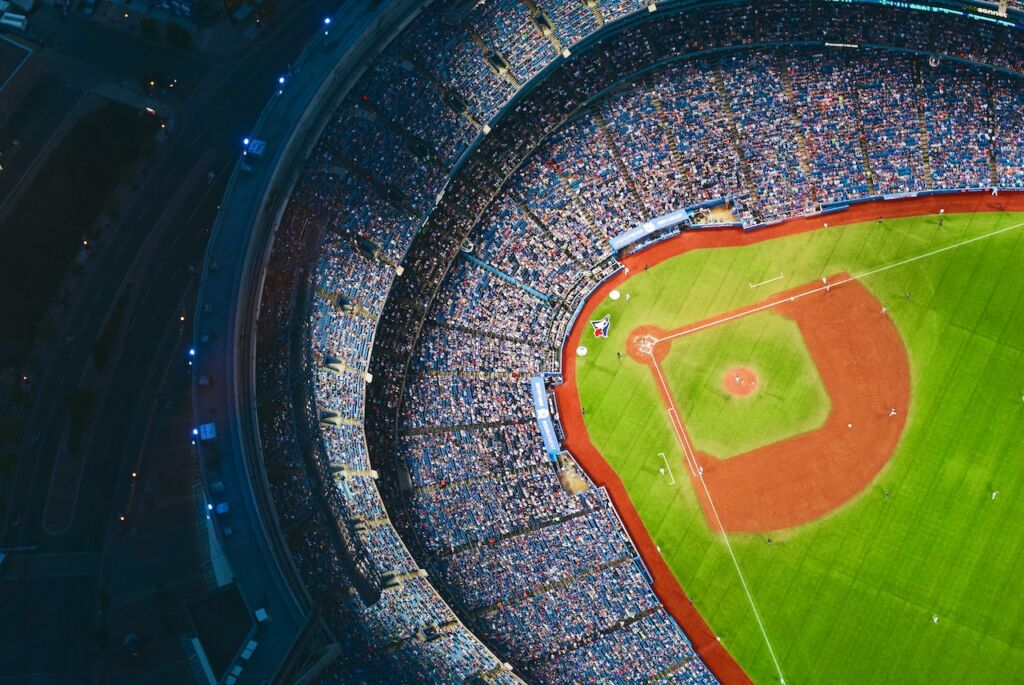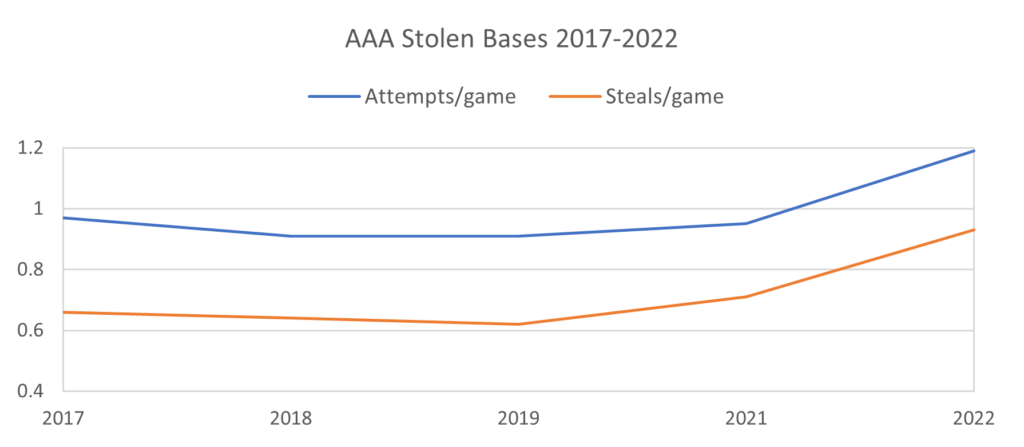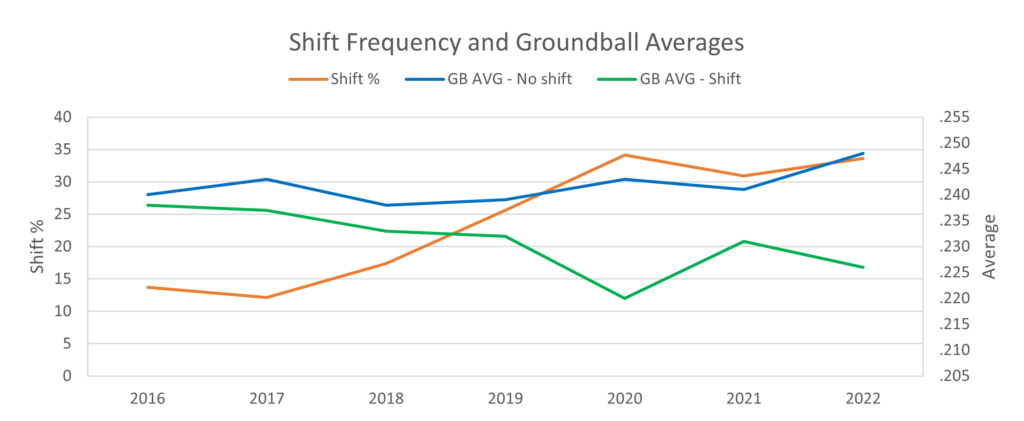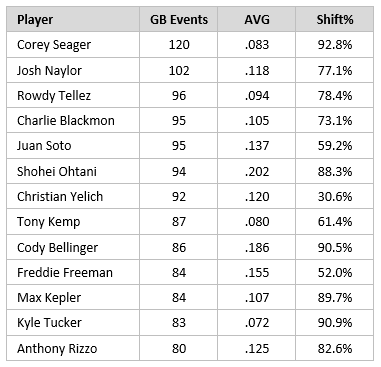-
 December 7, 2022, 1:01 pm
December 7, 2022, 1:01 pmLast Updated on December 7, 2022 1:01 pm by Joe Orrico | Published: December 7, 2022
Much fuss was made back in September when MLB announced the new rules they’ll be instituting for the 2023 season. While most baseball fans probably haven’t given the changes a second thought since then, those in the fantasy industry have been postulating, researching and trying to predict what the changes will mean for the fantasy game.
I’m not here to debate whether the changes are good or bad – you can decide for yourself – but to look at how they relate to the fantasy game and give you some things to consider for the 2023 season.
Rule #1: Larger Bases
The smallest change we’ll see in 2023 is, ironically, larger bases. The bags will increase from 15 to 18 inches square. That doesn’t seem like much on paper, but it works out to 44 percent more area.
The primary goal is to reduce injuries and collisions, especially at first base. But when the Competition Committee introduced larger bases in the minors in 2021, they announced that they believed there would be a “modest impact on the success rate of stolen base attempts.” In theory, this makes sense. Larger bases provide more area in play for runners and more space for fielders to cover when attempting to apply a tag.
The larger bags also reduce the distance between bases by 4 1/2 inches. Think of all the bang-bang plays on steal attempts. How many outs would be ruled safe if the bag was a few inches closer? It’s also possible that just knowing they’re that much closer could lead baserunners to have a more aggressive mindset on the basepaths.
However, nothing in the data suggests that larger bases alone led to a big jump in steals. We’ll have to look at the other rule changes to understand better how the stolen base environment will change.
Rule #2: Pitch Clock
The new pitch clock will likely be the most noticeable change. MLB’s goal is to increase the pace of play and shorten games by limiting the time between pitches.
Here’s a rundown of the new pitch clock rules:
- The timer starts when the pitcher receives the ball and stops when they begin their delivery.
- The pitcher has 15 seconds on the clock with the bases empty and 20 seconds with runners on.
- There’s also a timer on the batter, who must be in the box and “alert to the pitcher” within eight seconds of the clock starting.
- If the pitcher runs out of time, it’s an automatic ball. If the batter isn’t ready in time, it’s an automatic strike.
I have no doubt that pitchers will adapt to the clock; these are professionals, after all. I also have no doubt that teams will look for and exploit any loopholes to give their pitchers a few extra seconds of rest between pitches. Even so, it will be interesting to see the effects of the increased pace of play – especially on older pitchers and relievers who routinely pitch in high-leverage situations. It’s been suggested that we could see a slight decline in velocity across the league with the reduced rest time.
According to Statcast pitch tempo measurements, relievers are the slowest pitchers. This tracks since they usually come into the game in high-leverage situations. They’ll be the ones to keep an eye on as the league adjusts to the new time limits. How will they deal with the extra mental and physical stress and, for some, being forced to change years of established routines?

Top 10 slowest pitchers by Statcast Pitch Tempo leaderboard, new pitch timer adjusted. Source: BaseballSavant Take Kenley Jansen as an example. In 2022, by the rules of the new timer, he had a median time of 19.6 seconds between pitches with the bases empty and 25.4 seconds with runners on base, the longest by almost a full second. He’ll have to trim roughly five seconds off the amount of time it takes him to deliver the ball and won’t be able to take a comfortable 45 seconds between pitches. What impact will this have on his velocity and effectiveness over an outing and the course of the season?
Unfortunately, we won’t know the answer until we get a chance to see the pitch clock in action. I recommend not overreacting by taking someone like Jansen off your draft list entirely. He’s still going to be a closer wherever he signs. Just be aware that the pitch clock is a new variable we’ve never seen before at this level. Personally, in my drafts, I’ll be looking to secure a more reliable source of saves before it gets to the point where Jansen is the best closer option left.
Now, to figure out what impact the pitch clock will have on stolen bases, we need to consider the next significant rule change: restrictions on pickoffs.
Rule #3: Pitcher Disengagements
Pitchers will only be allowed two pickoff attempts or step-offs per at bat. The runner automatically advances if they step off the rubber a third time and don’t successfully pick off the runner. While the age-old game of cat and mouse between pitcher and runner will still be part of the game, it will be intriguing to see how it plays out on the field with this new wrinkle.
While runners won’t be able to walk off the base with an outrageous lead after two pick-off attempts, they will know the pitcher will be wary of risking a third attempt. The runner should have an edge as the clock winds down, with the pitcher under pressure to deliver the ball home.
With larger bases, the pitch clock and limited pickoffs, stolen bases will be much more prevalent in 2023. We can look at data from the minors where these rules were tested to understand what the change might look like.
Let’s look at the stolen base data from AAA, where the rules in 2022 were similar to those to be used in the majors. In 2022, the number of attempts jumped to 1.19 per game, up from an average of .93 over the previous four seasons. Meanwhile, steals increased to .93 per game, up from an average of .66 per game. The 2022 success rate of 78.5% improved from the 70% success rate from 2017-2021.

Stolen base attempts and successful steals per game in AAA from 2017-2022. Source: Baseball Reference Stolen bases will increase across the board relative to players’ past tendency to run. Players who only stole a few bags in 2022 could add a couple extra to their total, but not enough to make a significant impact. On the other end of the spectrum, high-volume base stealers could significantly improve their totals, and I’d be willing to bet we will see a handful of players eclipse the 40-steal mark. We may even see a 50-steal season or two…or three (you get the idea).
However, while there may be more top-end base-stealing talent, we should also be able to rely on players that stole 10 to 25 bags in 2022 for a boost in stolen base totals across our teams.
For draft strategy and team building, don’t overreact by overvaluing steals. As steals become more common, the value will lessen, so selling out for steals-only type players will hurt you in the long run. Jorge Mateo, the 2022 AL leader with 35 swipes, is not someone you should be reaching for just because he could run even more this year. Focusing on solid, all-around players with speed in their profile is still a good approach.
The other thing to remember when projecting and drafting for stolen bases is the team and manager’s history and philosophy on the basepaths. Some teams already play an aggressive running game; they may get even more aggressive. For teams that previously haven’t emphasized steals, we’ll have to wait to see how they adapt to the new rules and how much emphasis they put on running in the new environment.
For example, under Chris Woodward, the Rangers have been among the most steal-happy teams for the past four seasons. But how will their new manager, Bruce Bochy, approach 2023? His career steals rate+ of 99 for second base and 86 for third base tells us that he hasn’t been incredibly aggressive on the basepaths for the balance of his career – although he has had seasons in which he let his teams run more than league average. Hopefully, with the new rules in place, he’ll see players like Adolis García, Marcus Semien and Bubba Thompson on the roster and set them loose.
Rule #4: Shift Restrictions
Our final rule change is restrictions on defensive shifting. Here are the key points you need to know:
- All infielders must be within the outer boundary of the infield (on the dirt cut-out).
- Infielders cannot switch sides of the infield (past second base).
- Four-man outfields are no longer allowed.
So, what can teams still do with their defense? They can still play their shortstops and second basemen up the middle, as long as they don’t cross second base before the pitch. But you’ll no longer see three infielders overloaded on one side of the field. You also won’t see any infielders hanging out in shallow right field, gobbling up those flares and groundballs that find a way through the initial wall of defenders. Teams will experiment and do their best to optimize alignments, but more balls in play will end up as hits, as per the rule’s intention.
Looking at the following chart, you can see that as shift usage has increased, the batting average on groundballs has dropped.

Shift rates and batting average on groundballs from 2016-2022. Source: Baseball Savant While the league-wide average on groundballs will rise in 2023, left-handed batters, especially those who pull the ball, will see the most significant impact from the shift restrictions. For reference, left-handed batters hit .236, while right-handed batters hit .247 in 2022. Lefties that pulled the ball on the ground hit .137, compared to .204 for righties.
Here are the left-handed batters with the most pulled groundballs against a shift.

Left-handed batters with 80+ pulled groundballs when facing a shift in 2022. Source: FanGraphs, Baseball Savant There are some intriguing names on this list. While we won’t be taking a closer look at them in this article, it gives you an idea of the boost some of these players will see in 2023 under the new shift rules; they should see a bump in their average, on-base percentage and counting stats as more of their pulled groundballs go for hits. We’ll dive into some players that will benefit from the shift restrictions in a future article.
In the end, all we can do is make educated guesses about what will happen in 2023. Whether you like the changes or not, they need to be considered when deciding your approach to drafting and managing the season. Just don’t overreact. You may find some players more attractive or less enticing due to the impending changes but be ready to adapt once the season begins as we all discover the impact of the new rules together.

Wow great explanation of the changes. Hopefully they enhance the game to a higher level of play. Thanks you for that.
Thanks, I hope so too!
This is a great explanation of the changes. I have been wondering how the new rules would affect my fantasy team and my drafting process.